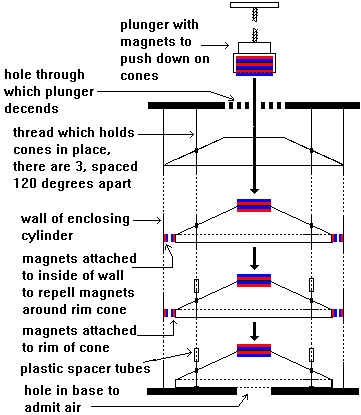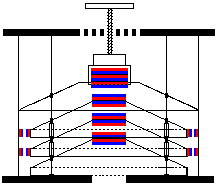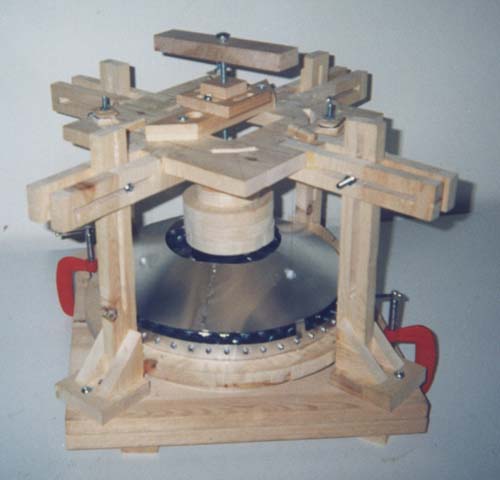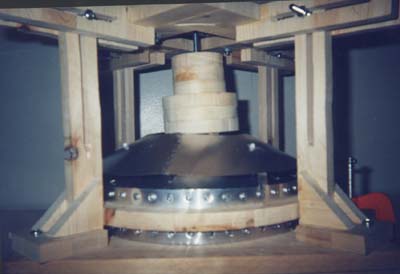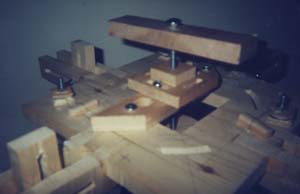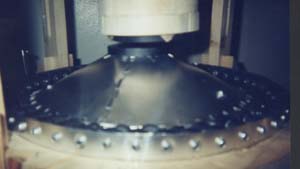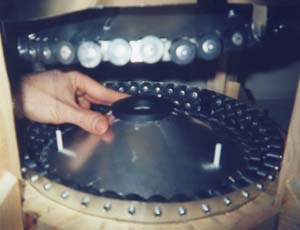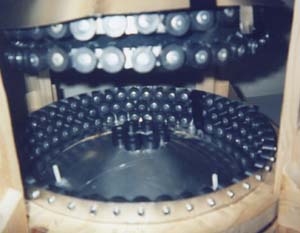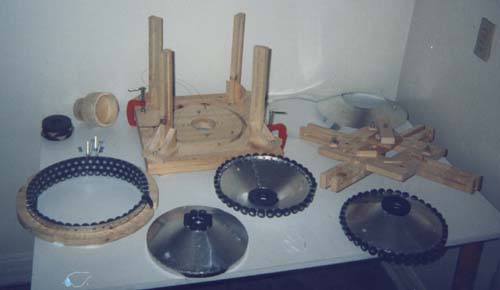The objective of this experiment was to duplicate David Hamel's spaceship but on a much smaller and cheaper scale. This was done before my first contact with David Hamel and I went roughly from Pierre Sinclaire's blueprints.
It was unsuccessful because its design does not allow it to do what it needs to do to even begin producing an effect. These devices are very difficult to build, and this one was a great learning experience. With the knowledge gained, I'll move on to the next one.
The Basic Device
The basic device consists four inverted cones. The top one acts as a cover. Two in the middle, ideally suspended magnetically but in my case, suspended on plastic spacer tubes. The plastic spacer tubes are held in place by strong threads (actually fishing line) that pierce the skin of the cones, 120 degrees apart. The fourth cone is solidly attached to the base of the device.
The red and blue represent magnets. A single set of a red line and a blue line is a single magnet. The two colors represent the two poles. The two middle cones have ceramic magnets riveted around their entire lower rim. The diameter of the bottom of the cones is 23 cm (9 inches).
|
|
|
|
|
|
|
|
|
Conclusion
The problems with this device are as follows:
- The ceramic magnets around the rim of the cones and inside the wall were too strong. Without the threads, the wall ceramic magnets would pull the cone over the top of the wall or under the bottom. With the thread, the cones could not wobble.
- The cones were made of aluminum which can be bought at local hardware stores. It made for too soft cones. The cones would be deformed by the pull of the wall magnets.
My next attempt will be the simpler Hamel cones in a drum device utilizing all that I've learned in building the above device.

